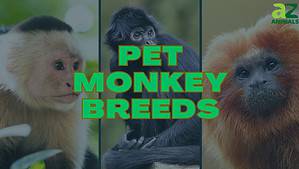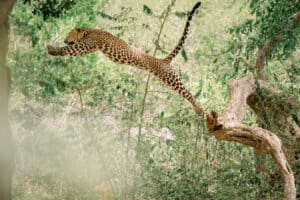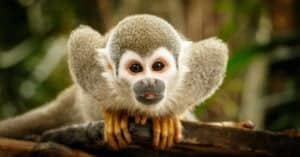Today we are going to explore more about the spider monkey. Did you know that their thoughts and memories are quite acute? They’re called spider monkeys because they resemble spiders when hanging from their tails. They are members of the Atelidae family. Spider monkeys, the largest and most apelike monkeys, can weigh up to 25 pounds and grow to 18 inches, not including their 36-inch tails! Want to learn more about these interesting creatures? Let’s explore 10 incredible spider monkey facts!

1. There Are Seven Species of the Spider Monkey

Geoffroy’s spider monkeys are one of seven species of spider monkeys.
©Nick Fox/Shutterstock.com
Spider monkeys have seven species, each with unique features. They are as follows:
- Red-faced spider monkey
- White-fronted spider monkey
- Brown spider monkey
- Brown-headed spider monkey
- Geoffroy’s spider monkey
- Peruvian spider monkey
- White-cheeked spider monkey.
2. Spider Monkeys Use All of Their Limbs for Movement
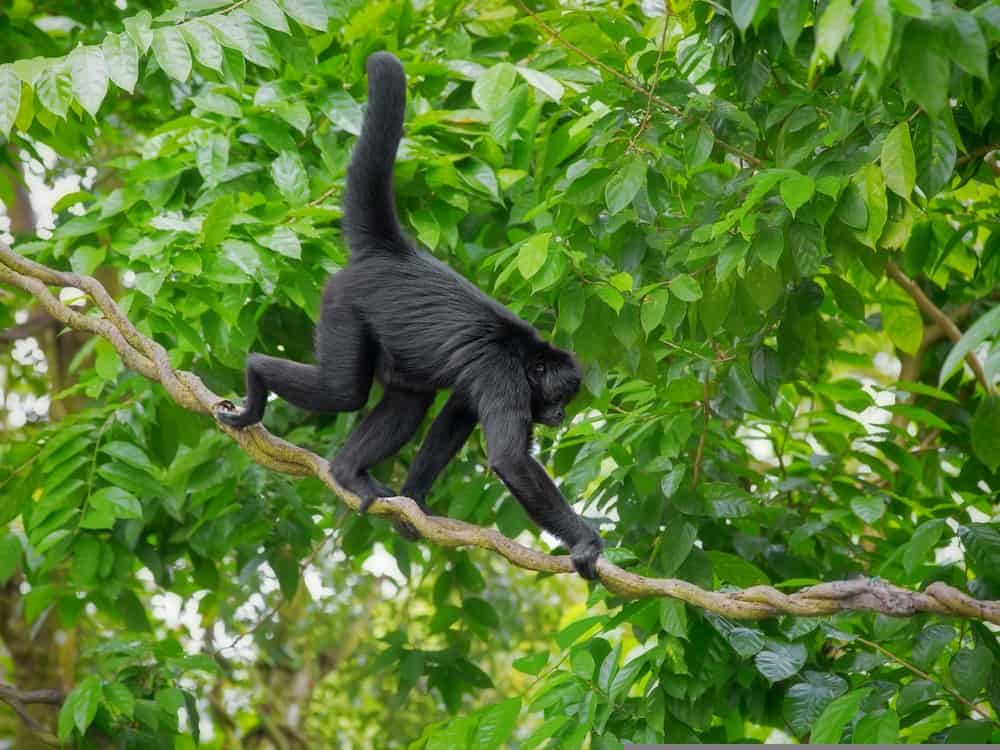
Spider monkeys use all of their limbs to move around efficiently.
©Kjersti Joergensen/Shutterstock.com
Spider monkeys use their tails for balance and their arms to drag across the ground as they walk. They move fast through the forest trees in small groups, spreading out like spiders and grabbing tree limbs with their long, prehensile tails.
3. Spider Monkeys Do Not Have Opposable Thumbs Like Other Monkeys
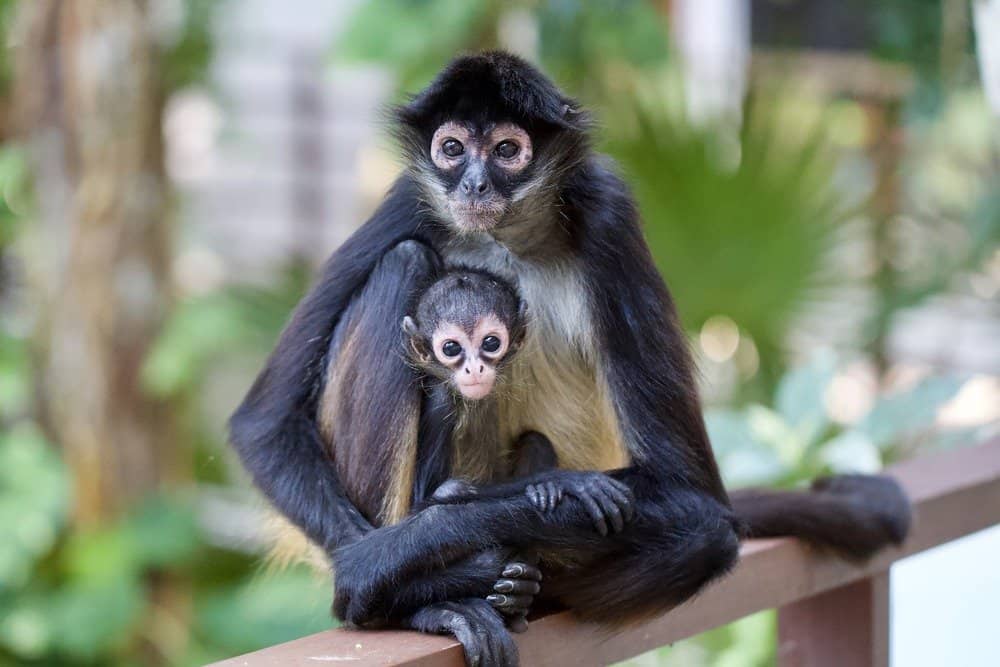
Spider monkeys have four hooked fingers as an alternative to opposable thumbs.
©StanBullett/Shutterstock.com
Unlike most monkeys, spider monkeys lack opposable thumbs. They have four hooked fingers as an alternative. All primates, except for three, still have five fingers and toes on each hand and foot. The only exceptions are the colobus monkeys of Africa, spider monkeys, and so-called woolly spider monkeys of South America.
4. All Seven Species of Spider Monkey Are Threatened With Extinction

All spider monkeys are endangered to some degree.
©Eric Gevaert/Shutterstock.com
Each spider monkey species, except for the red-faced spider monkey, is listed as Endangered or Critically Endangered. The red-faced spider monkey’s conservation status is Vulnerable. One of the top 25 most endangered primates in the world, the brown spider monkey is listed as Critically Endangered. Due to the destruction of their forest habitat for oil palm, illicit mining, and cattle ranching, it is believed that there are fewer than 3,000 of these animals surviving in the wild.
5. Spider Monkeys Have Many Predators But Humans Are Their Greatest Threat

The tree-climbing jaguar is a threat to the tree-dwelling spider monkey.
©Laura Kathleen Lewis/Shutterstock.com
As tree-dwelling grazers, spider monkeys have few predators. Owls, hawks, and eagles will take their young. The tree-climbing jaguar is a threat along with anacondas, ocelots, and pumas. The harpy eagle may also attack. However, humans are the spider monkey’s main threat. Logging and land clearing greatly affect the spider monkeys’ habitat.
6. A Group of Spider Monkeys Is Called a Troop
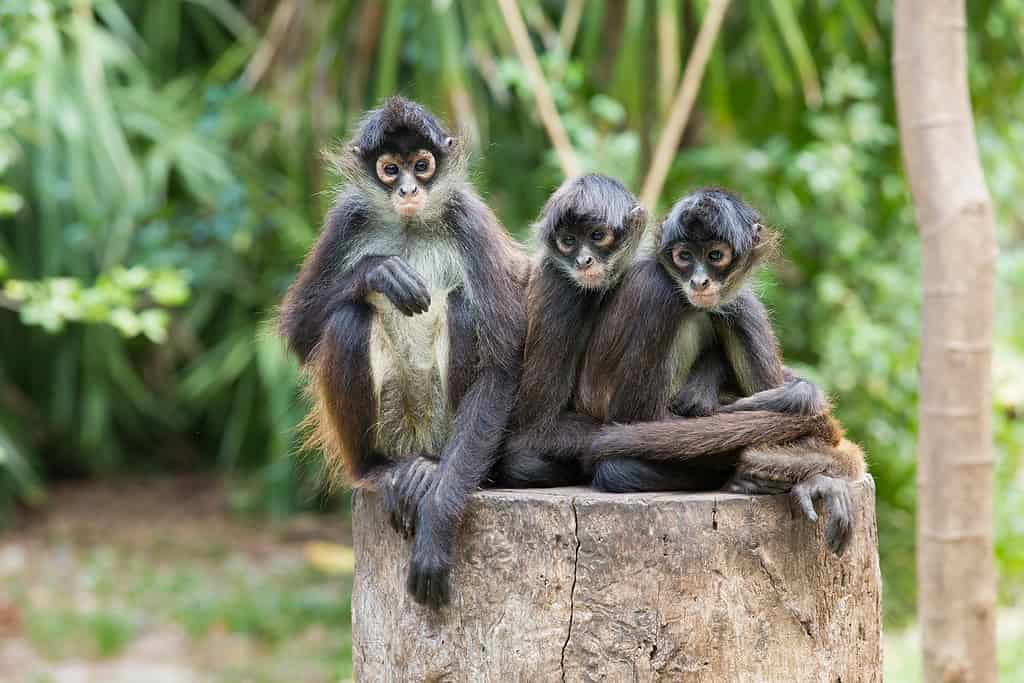
A troop of five to eight monkeys spend the night on the treetop canopy.
©Pakhnyushchy/Shutterstock.com
Spider monkeys live in troops. Each day, these diurnal mammals move about a half-mile while eating nuts, seeds, and fruits and grooming each other. The troop can break up during the day to make feeding easier and safeguard the community’s safety. Five to eight monkeys gather at sunset to spend the night on the treetop canopy.
7. Spider Monkeys Are Usually Very Affectionate With Other Troops

Spider monkeys can show affection in a variety of ways.
©iStock.com/alexandragl1
When spider monkeys from diverse groups meet, they hug one another as a sign of friendship and to avoid conflict. They show affection by encircling one another with their tails. Males are known to spend hours grooming one other and cuddling up for the night. However, they will act aggressively and try to dominate females.
8. Spider Monkeys Are Incredibly Fast When Swinging
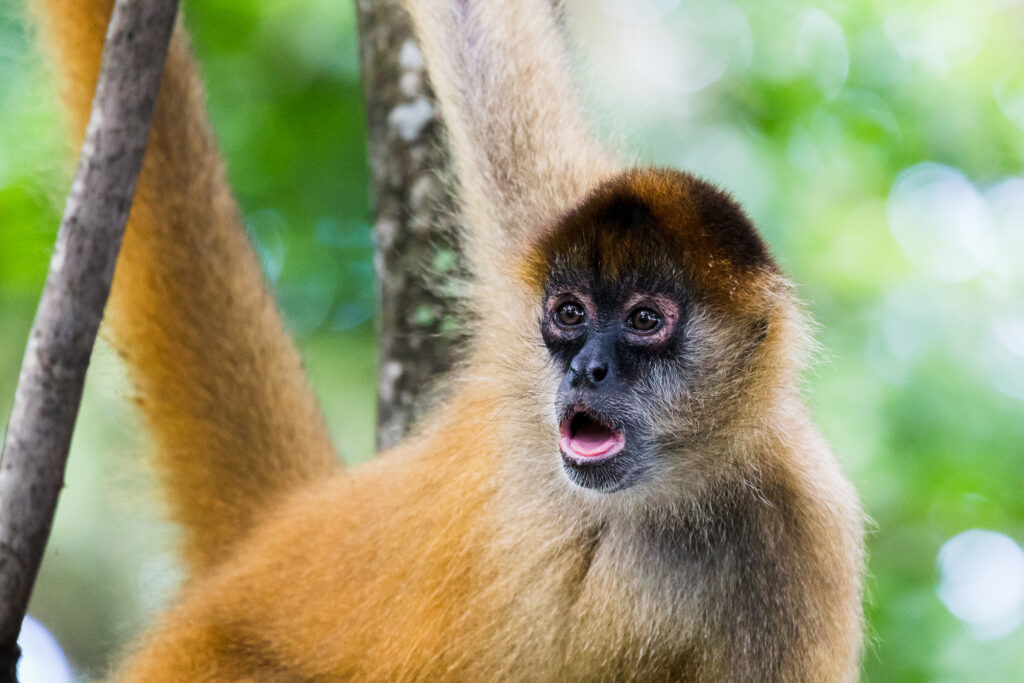
Spider monkeys can swing from one tree to another at speeds of up to 35 mph.
©Jason Wells/Shutterstock.com
As quickly as a human can sprint on the ground, spider monkeys can swing through the treetops. The speed at which monkeys can swing from one tree to another can reach up to 35 mph. The long, slender limbs and excellent agility of spider monkeys are their defining characteristics.
9. Spider Monkeys Are Great at Communicating Silently
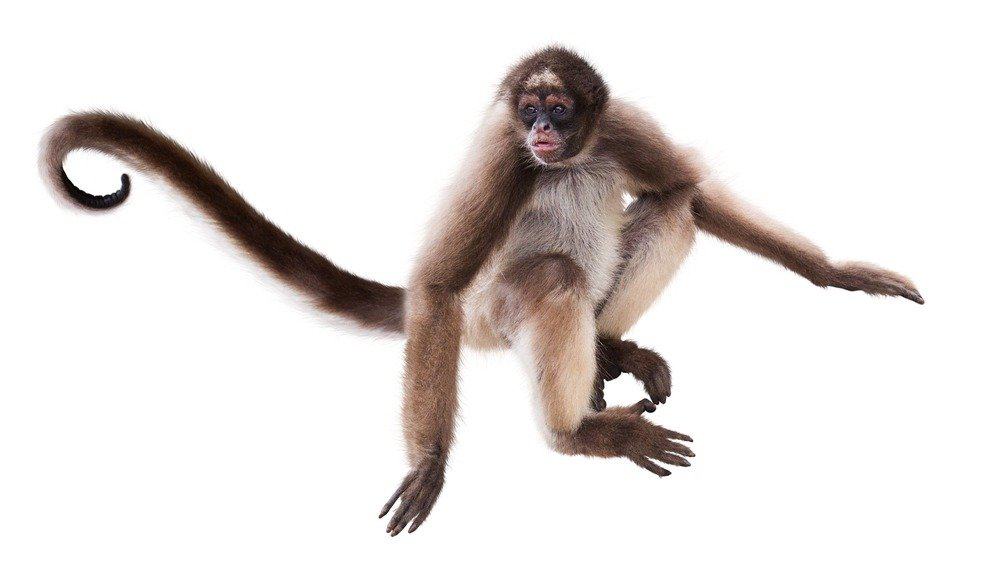
Spider monkeys can communicate with one another silently.
©BearFotos/Shutterstock.com
According to a study, monkeys and apes both utilize gestures to communicate. They are not known to be able to pick up sign language, either. Spider monkeys use nonverbal cues, including postures and gestures to communicate, especially within their own troop.
10. Spider Monkeys Are Very Vocal

The spider monkey will bark to ward off predators.
©Steven G. Johnson / CC BY-SA 3.0, via Wikimedia Commons – License
Spider monkeys will bark to ward off predators when they sense them coming. The spider monkey can bark, sob, and scream loudly and for a long time. They tend to socialize in groups and use vocalizations called whinnies to communicate with group members who are hidden from view.
The frequency or pitch of their whinnies is known to change, and the authors of this study examined whether this fluctuation is related to the caller’s relative social isolation. They examined if the frequency of the initial whine affected the listeners’ replies.
How was that for 10 incredible spider monkey facts? Did any of these surprise you?
The photo featured at the top of this post is © Nick Fox/Shutterstock.com
Thank you for reading! Have some feedback for us? Contact the AZ Animals editorial team.



